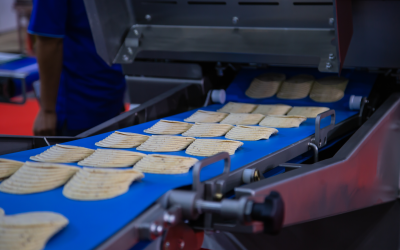BRC and SQF include provisions for determining weight declaration compliance with respect to applicable regulations. For most, that means establishing a sampling program for packaging tare and product contents based on National Institute of Standards and Technology (NIST) Handbook 133.
As stated in the document’s forward, the NIST Handbook 133 was prepared as a procedural guide for compliance testing of net content statements primarily for government officials including the USDA, FDA, FTC, EPA, and TTB. However, the handbook is also referenced in regulatory requirements, and is a national standard for evaluating accuracy of the content packaging process. For example, Title 9 CFR 317 describes labeling requirements for USDA products, including content statements. No manufacturing process is perfect. There will be variances, but how much of a variance is acceptable?
Title 9 CFR 317.2(h)(2) states: “The statement as it is shown on a label shall not be false or misleading and shall express an accurate statement of the quantity of contents of the container. Reasonable variations caused by loss or gain of moisture during the course of good distribution practices or by unavoidable deviations in good manufacturing practices will be recognized. Variations from stated quantity of contents shall be as provided in §317.19…..” Title 9 CFR 317.19 references the National Institute of Standards and Technology (NIST) Handbook 133 to define allowable reasonable variations.
Developing a net weight verification program using the over 250 page NIST Handbook 133 can seem like a daunting task. The handbook includes provisions for multiple products including food, alcohol, beverages, cosmetics, and even landscaping supplies like mulch and rock. One needs to first identify the sections of this handbook applicable to one’s business to avoid information overload. There is a sufficiently detailed Table of Contents on page ix in the beginning of the handbook to help guide your way. One could supplement research using the “Find” function within the PDF version of the NIST Handbook 133. Simply hold the Ctrl and F keys on your keyboard. A Navigation Window should appear on your screen. Type any word in search bar to help identify applicable sections of the handbook.
For USDA regulated products, Table 2-2 Sample Plans for Category B is a place to start. Column 1 defines the Inspection Lot Size as either 250 units or fewer or 251 units or more. A lot is a production lot with a common net content per packaging line. For example, if a facility manufactures 1 and 5 pound tubes, also known as chubs, of packaged ground beef in a single product lot on a single line for manufacturing purposes, those products are actually two separate lots for net weight sampling. All the 1 pound packages are one lot, and all the 5 pound packages are a separate lot.
Once a lot is determined, Column 2 states the minimum sample size required for content verification per lot, and Column 3 states the minimum sample size required for packaging tare samples per net weight lot.
Column 4 references Table 2-9 to determine the maximum allowable variance of net contents. Table 2-9 U.S. Department of Agriculture, Meat and Poultry Groups and Lower Limits for Individual Packages (Maximum Allowable Variations [MAVs}) can be found on page 153 of the NIST Handbook 133. This table establishes the lower limit for individual packages sampled. This does not establish the lower limit of a lot average. The lot average still needs to be at or above the declared content.
Let’s go back to the 5lb packages of ground beef. According to Table 2-9 a 5lb (or 80oz) package can have an MAV of 0.094lb (1.5oz). 5lb – 0.94lb = 4.906lb. Therefore, a single 5lb package of ground beef can have a net weight as low as 4.906lbs and still be in acceptable. However, the average net weight of all the samples must still weight 5lbs or more.
If the facility produced 250 five pound packages of ground beef, the facility would then sample 10 of those package for declare net weight. If all 10 packages had a net weight of 4.906lbs or between 4.906lbs and 4.999lbs the product lot would not be an acceptable net weight because the average would be less than the 5lb declared net weight.
What if the facility makes ice glazed frozen chicken breasts? Does the ice count toward the declared net weight? There’s a sampling plan for this as well. NIST Handbook 133 2.6 Net Weight of Encased-in-Ice and Ice Glazed Products includes provisions to account for ice glazing. Special procedures are also defined for Fresh and Frozen Chitterlings (NIST Handbook 133 Section 2.7.2) due to purge. If you procedure liquid items like beer, spirits, or FDA regulated foods like bottle water pay close attention to chapter 3 of the NIST Handbook 133. As aforementioned, NIST Handbook 133 has something for almost all product types.



